🏛️🇨🇿 Cultural Marvels of Prague, Czech Republic 🏰🌆
Discover the Charms of Prague's Cultural Tapestry
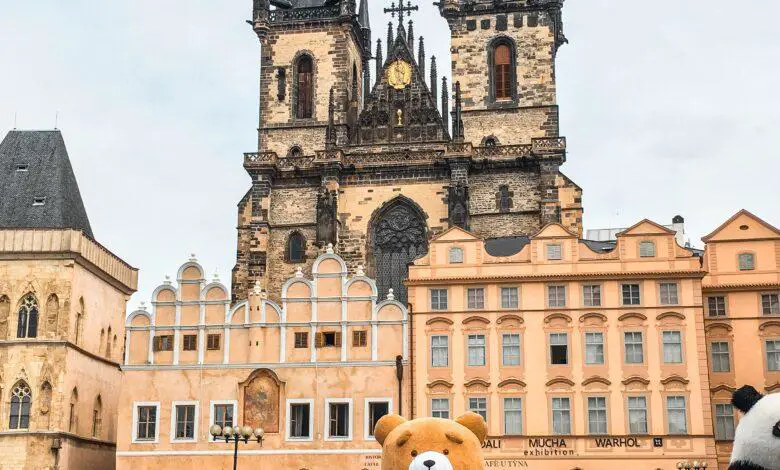
Introduction
Prague, the capital of the Czech Republic, is a city that exudes history and culture at every turn. Known for its stunning architecture, rich history, and vibrant arts scene, Prague is a cultural treasure trove waiting to be explored. In this article, we’ll take you on a journey through some of the most captivating cultural marvels that this city has to offer. From the iconic Prague Castle to the lively Old Town Square, the music and art scene, and the delectable Czech cuisine, Prague has something to enchant every visitor. Join us as we uncover the cultural gems that make Prague a must-visit destination for any traveler seeking to immerse themselves in the heart of European culture.
Prague Castle
Historical Significance of Prague Castle
Prague Castle, perched high on a hill overlooking the enchanting city of Prague, holds a unique and storied place in Czech history. Established in the 9th century, this castle has been the backdrop for countless historical events, making it one of the most historically significant sites in the Czech Republic. Over the centuries, it has served as the seat of Czech kings, emperors, and presidents, witnessing the rise and fall of various dynasties and empires.
Prague Castle’s Stunning Architecture
The architectural splendor of Prague Castle is nothing short of breathtaking. The complex is a captivating blend of various architectural styles, including Romanesque, Gothic, Renaissance, and Baroque. One of the most iconic structures within the castle complex is the magnificent St. Vitus Cathedral. This Gothic masterpiece boasts intricate spires, striking stained glass windows, and the final resting place of many Czech kings and saints.
Seat of Czech Kings, Emperors, and Presidents
Throughout its rich history, Prague Castle has been a symbol of power and authority. It was the seat of Czech kings during the medieval period and later served as the residence of Holy Roman Emperors. It played a pivotal role in the tumultuous events of the 20th century, serving as the presidential residence during the First Czechoslovak Republic and once again after the Velvet Revolution, when it became the official residence of the Czech presidents.
Key Attractions within the Castle Complex
The castle complex encompasses a wealth of attractions that offer a captivating journey through time. St. Vitus Cathedral, with its stunning architecture and rich history, is a must-visit. Don’t miss the Old Royal Palace, where Czech kings held court, and the colorful and charming Golden Lane, a row of tiny houses where artists and craftsmen once lived. Explore the impressive Powder Tower and take in the breathtaking views from the Great South Tower.
Prague Castle is more than a collection of impressive buildings; it’s a living testament to the resilience and spirit of the Czech people. Its historical significance, stunning architecture, and role as the seat of power for centuries make it an essential stop for anyone seeking to understand the heart and soul of the Czech Republic. Whether you’re a history enthusiast, an architecture lover, or simply a traveler in search of extraordinary experiences, Prague Castle offers a unique and enriching journey through time.

Charles Bridge
Historical and Architectural Importance of Charles Bridge
The Charles Bridge, a historic gem in the heart of Prague, has played a pivotal role in the city’s history and stands as a masterpiece of medieval bridge architecture. Commissioned by Emperor Charles IV in the 14th century, this iconic bridge spans the Vltava River, connecting the Old Town and the Lesser Town. Its historical significance is immense, having facilitated trade and cultural exchange throughout the ages, and it remains one of the most cherished landmarks in Prague.
Constructed from Bohemian sandstone, the bridge is a stunning example of Gothic architecture. Its 16 arches and elegant design are a testament to the engineering skills of the time. The bridge also features three bridge towers, including the grand Old Town Bridge Tower, which stands as a sentinel at the entrance to the Old Town.
If you are interested in knowing about Machu Picchu. You can check out a detailed post here at Anzeel.
Statues and Their Symbolism
What truly makes the Charles Bridge a unique and enchanting place are the 30 statues that adorn its balustrades. These statues were added during the 17th and 18th centuries, and they depict a mesmerizing array of saints, patron saints of various towns, and allegorical figures. The most famous among them is the statue of St. John of Nepomuk, easily recognizable due to its gleaming brass surface.
Each statue carries its own symbolism and legend, offering a rich tapestry of Czech history and religious devotion. The statue of St. John of Nepomuk is particularly revered and is said to bring luck if you touch the five stars on his halo.
Vibrant Atmosphere with Street Musicians and Artists
Visiting the Charles Bridge is not just a journey through history; it’s a vibrant and immersive experience. The bridge’s cobblestone surface is often bustling with street musicians, artists, and vendors, creating a lively atmosphere. Musicians serenade passersby with melodious tunes, while artists display their talents through paintings and handicrafts.
This dynamic ambiance adds to the bridge’s charm and provides visitors with an opportunity to engage with the city’s artistic and cultural spirit. Whether it’s the notes of a violin or the colors on an artist’s canvas, the Charles Bridge invites you to immerse yourself in the creative heartbeat of Prague.
Old Town Square
Central Role of Old Town Square in Prague’s History
Old Town Square, or Staroměstské náměstí in Czech, stands at the heart of Prague and is a focal point of the city’s rich history. This square has witnessed significant historical events and served as a bustling marketplace and a gathering place for locals and visitors for centuries. Dating back to the 12th century, it has been the stage for royal proclamations, political rallies, and public celebrations, making it a true historical epicenter of Prague.
The square is encircled by an array of splendid architectural treasures, each with its own tale to tell. It’s not only a place of historical importance but also a vibrant center where the past and present blend harmoniously.
Astronomical Clock and Its Unique Features
The Astronomical Clock, or Prague Orloj, is one of the main attractions in Old Town Square. It’s a magnificent medieval timepiece that dates back to the early 15th century and is located on the Old Town Hall tower. What sets this clock apart are its unique features, both practical and symbolic.
The clock showcases the movement of the sun, moon, and stars, and it not only tells the time but also provides astronomical information. The hourly show, known as the “Walk of the Apostles,” is a spectacle in itself, with figurines of the apostles appearing at the windows. The clock also features zodiac signs, a calendar dial, and various other intricate details that make it a fascinating blend of science and art.
Stunning Gothic and Baroque Architecture Surrounding the Square
The architecture surrounding Old Town Square is a captivating blend of Gothic and Baroque styles. The most iconic building is the Old Town Hall with its stunning Gothic tower, which houses the Astronomical Clock. The Church of Our Lady before Týn, with its twin spires, is another Gothic masterpiece that dominates the skyline.
The square is also adorned with Baroque-style buildings, such as St. Nicholas Church, which boasts an opulent interior filled with ornate decorations and frescoes. This interplay of architectural styles showcases the evolution of Prague over the centuries, from its medieval roots to its Baroque and Renaissance influences.
Prague’s Music and Art Scene
Prague’s Classical Music Heritage
Prague is a city steeped in classical music history and has been a muse to many legendary composers. Wolfgang Amadeus Mozart, one of the most revered composers in the world, found inspiration in Prague. He premiered his opera “Don Giovanni” at the Estates Theatre in 1787, a momentous event that solidified his connection with the city. Antonín Dvořák, a Czech composer of worldwide acclaim, also hails from Prague and left an indelible mark on classical music. His symphonies, chamber music, and operas continue to resonate with music enthusiasts.
The city’s classical music heritage lives on through its orchestras, choirs, and world-class venues. The Prague Symphony Orchestra and the Czech Philharmonic Orchestra are renowned for their exceptional performances. Prague Spring International Music Festival, an annual event, attracts musicians and music lovers from around the globe. The Estates Theatre, Rudolfinum, and the Municipal House are iconic venues that host classical music performances, creating an enchanting atmosphere for those seeking to immerse themselves in the city’s musical legacy.
Vibrant Contemporary Art Scene
While Prague boasts a rich classical music tradition, it also nurtures a thriving contemporary art scene. The city has become a hub for artists, galleries, and exhibitions that embrace modern and experimental art forms. The DOX Centre for Contemporary Art, located in a former factory, is a testament to the city’s commitment to contemporary art. It features avant-garde exhibitions, installations, and performances that challenge conventional norms.
Prague’s art district, known as Holešovice, is a haven for art lovers. Here, you can explore a variety of galleries, studios, and street art, each reflecting the vibrant, innovative spirit of the city’s art scene. The Crossroads of Art, an annual event, showcases the diversity and creativity of Prague’s contemporary artists, drawing visitors into a world of artistic exploration.
Famous Music Venues and Art Galleries
Prague is home to some iconic music venues and art galleries that have become synonymous with the city’s cultural scene. The Rudolfinum, a neo-Renaissance building on the banks of the Vltava River, not only houses the Czech Philharmonic Orchestra but also hosts numerous art exhibitions and cultural events.
For art enthusiasts, the National Gallery in Prague is a treasure trove of historical and contemporary art collections, offering a journey through Czech and European artistic heritage. The Veletržní Palace, a part of the National Gallery, houses an impressive collection of 20th and 21st-century art, including works by prominent Czech artists.
Museums and Galleries
Notable Museums and Galleries in Prague
Prague, a city steeped in history and culture, is home to an array of remarkable museums and galleries that cater to a wide range of interests. Whether you’re an art enthusiast, history buff, or simply curious about the city’s past, Prague has a treasure trove of institutions to explore.
National Gallery
The National Gallery in Prague stands as a beacon of Czech art and culture, boasting an extensive and diverse collection of works spanning centuries. Divided into various sites across the city, the National Gallery showcases everything from medieval art to modern and contemporary pieces. The Wallenstein Riding School, a stunning Baroque building, houses a comprehensive collection of European art, including works by Czech and international artists.
One of the most iconic sites within the National Gallery is the Veletržní Palace, dedicated to 20th and 21st-century art. Here, visitors can admire masterpieces by Czech artists such as František Kupka and Toyen, as well as renowned international artists like Pablo Picasso and Vincent van Gogh. The National Gallery is a testament to the city’s commitment to preserving and sharing its artistic heritage, contributing significantly to Prague’s cultural richness.
Museum of Communism
For those intrigued by the 20th-century history and the impact of communism in Eastern Europe, the Museum of Communism offers a captivating journey. This museum vividly portrays life during the communist era in Czechoslovakia. It features an array of artifacts, photographs, and multimedia exhibits that provide valuable insights into the country’s history during that period.
Visitors can explore the personal stories, the propaganda machinery, and the daily life of citizens under communist rule. The Museum of Communism is an essential stop for anyone interested in understanding the political and social dynamics that have shaped modern Czech society.
Contribution to Cultural Richness
The museums and galleries in Prague play a pivotal role in enriching the city’s cultural tapestry. They preserve the artistic and historical heritage of the Czech Republic, making it accessible to both locals and tourists. These institutions foster a deeper understanding of the city’s history, from its medieval origins to its modern evolution.
Moreover, they contribute to the thriving cultural scene in Prague by hosting exhibitions, events, and educational programs that engage visitors of all ages. By sharing the artistic achievements and historical experiences of the Czech people, these museums and galleries enhance the city’s appeal as a cultural destination and ensure that its rich heritage continues to inspire and educate generations to come.
FAQs
Q. Is Prague an expensive city to visit?
A. Prague offers excellent value for travelers compared to many Western European destinations. You can enjoy affordable accommodations, meals, and attractions.
Q. Is it necessary to learn Czech before visiting Prague?
A. While it’s useful to know a few basic Czech phrases, English is widely spoken in tourist areas, and you can get by with English-speaking locals.
Q. What’s the best way to experience Prague’s culture and arts scene?
A. Exploring Prague’s museums, attending classical music concerts, and visiting historic theaters are great ways to immerse yourself in the city’s rich culture.
Q. Are there any day trips from Prague worth considering?
A. Yes, you can take day trips to nearby destinations like Kutná Hora, Český Krumlov, and Karlštejn Castle to explore more of the Czech Republic’s cultural heritage.
Q. What are the must-visit museums in Prague?
A. Apart from the National Museum, don’t miss the Prague Castle, the Museum of Communism, and the Franz Kafka Museum to delve deeper into the city’s history and culture.
Q. What’s the best way to explore Prague’s historic neighborhoods?
A. Wandering through neighborhoods like Josefov (the Jewish Quarter), Malá Strana, and Vyšehrad will immerse you in Prague’s history and charm.
Conclusion
Prague, often referred to as “The City of a Hundred Spires,” is a place where the past and present seamlessly intertwine to create a cultural tapestry like no other. Its historical sites, architectural wonders, music and art scene, literary heritage, and mouthwatering cuisine all contribute to the city’s unique charm. As you wander the cobbled streets and stand in awe of the breathtaking landmarks, you can’t help but feel the centuries of history that have shaped this remarkable place. Whether you’re a history buff, an art enthusiast, a foodie, or simply a curious traveler, Prague’s cultural marvels have something to offer you. So, the next time you plan a trip, consider Prague as your destination, and let this city’s cultural wonders transport you through time and artistry. Prague awaits, ready to share its treasures with those who are willing to explore and appreciate its cultural riches.
UP NEXT
https://touristeyes.com/tourist-guide-of-keukenhof-garden-of-tulip-flowers-in-netherlands/

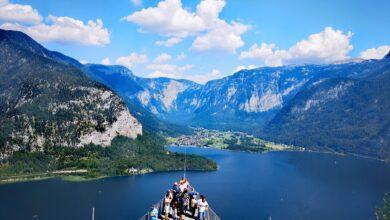
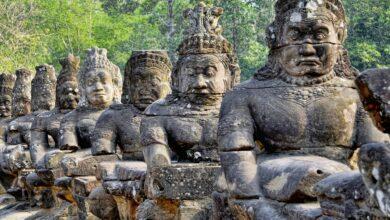
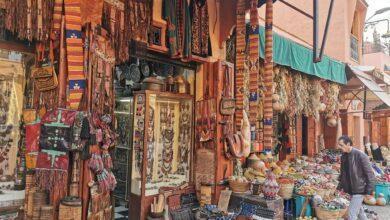
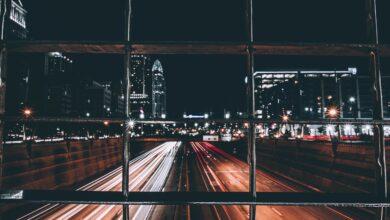
Facebook Comments